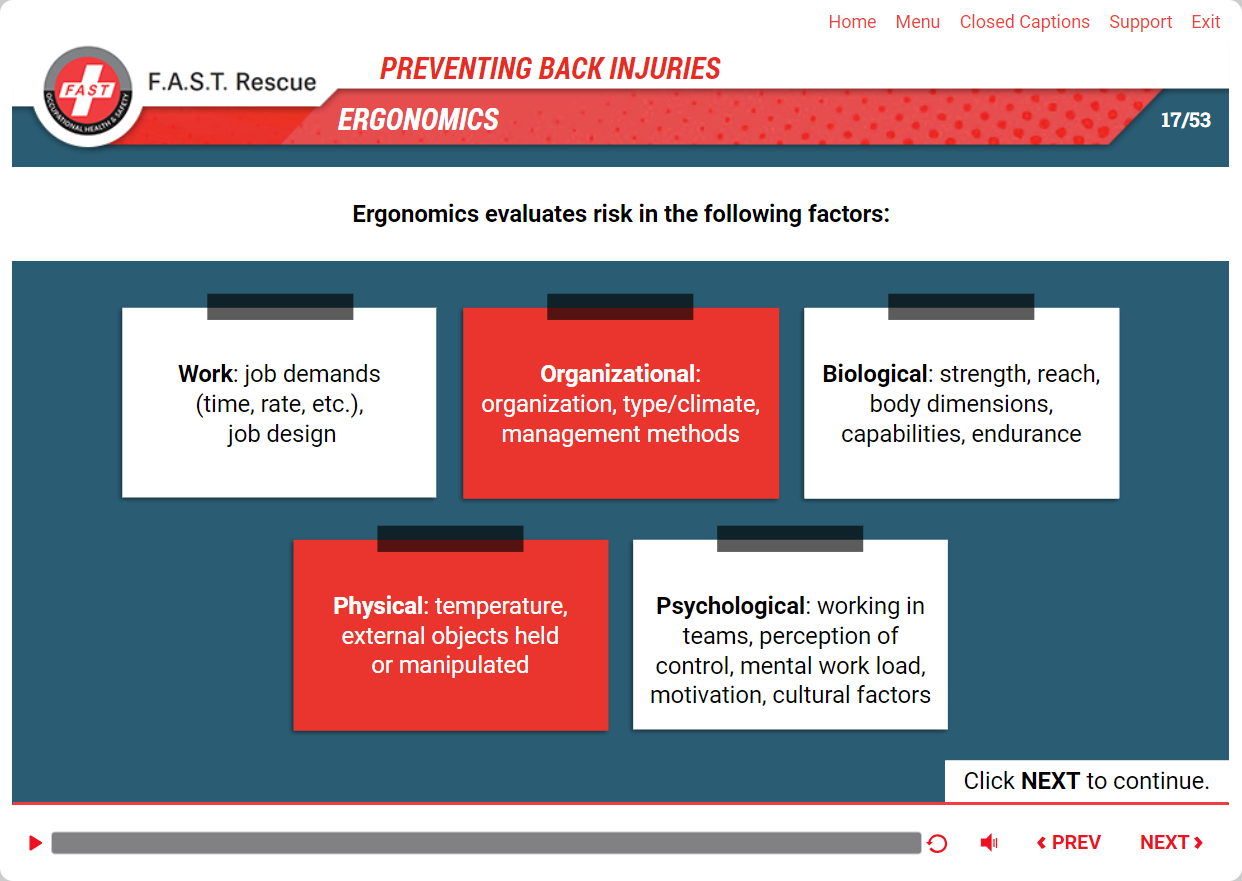Musculoskeletal disorders (MSD) are health conditions that affect the muscles, bones, tendons, ligaments, and other components of the body’s musculoskeletal system.
1. What is a Musculoskeletal Disorder (MSD)?
A Musculoskeletal Disorder (MSD) is a condition affecting muscles, bones, and related structures, often causing pain and limited movement. Examples include arthritis and back pain.
2. Types of Musculoskeletal Disorders
Various types of Musculoskeletal Disorders (MSDs) include conditions like arthritis, osteoporosis, and back pain, each affecting different parts of the body’s musculoskeletal system.
Apart from it, also learn about the following in this course:
1. Mechanism of Injury: The mechanism of injury refers to how an injury occurs, outlining the specific actions, forces, or events that lead to harm or damage to the body.
2. Ergonomic Hazards: Ergonomic hazards are conditions in the workplace that can lead to physical discomfort, strain, or injuries due to factors like poor posture, repetitive movements, or uncomfortable workstations.
3. Other Factors: Other factors are additional elements or considerations that contribute to a situation, even though they may not be explicitly mentioned.
4. Warning Signs: Warning signs are indications or signals that alert individuals to potential dangers, issues, or situations that require attention.




